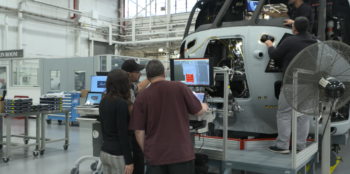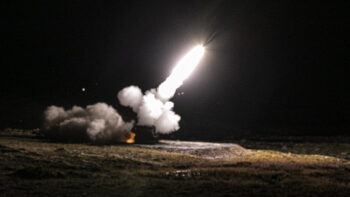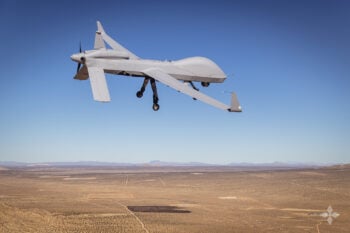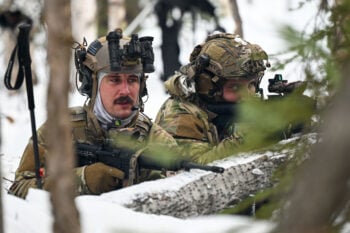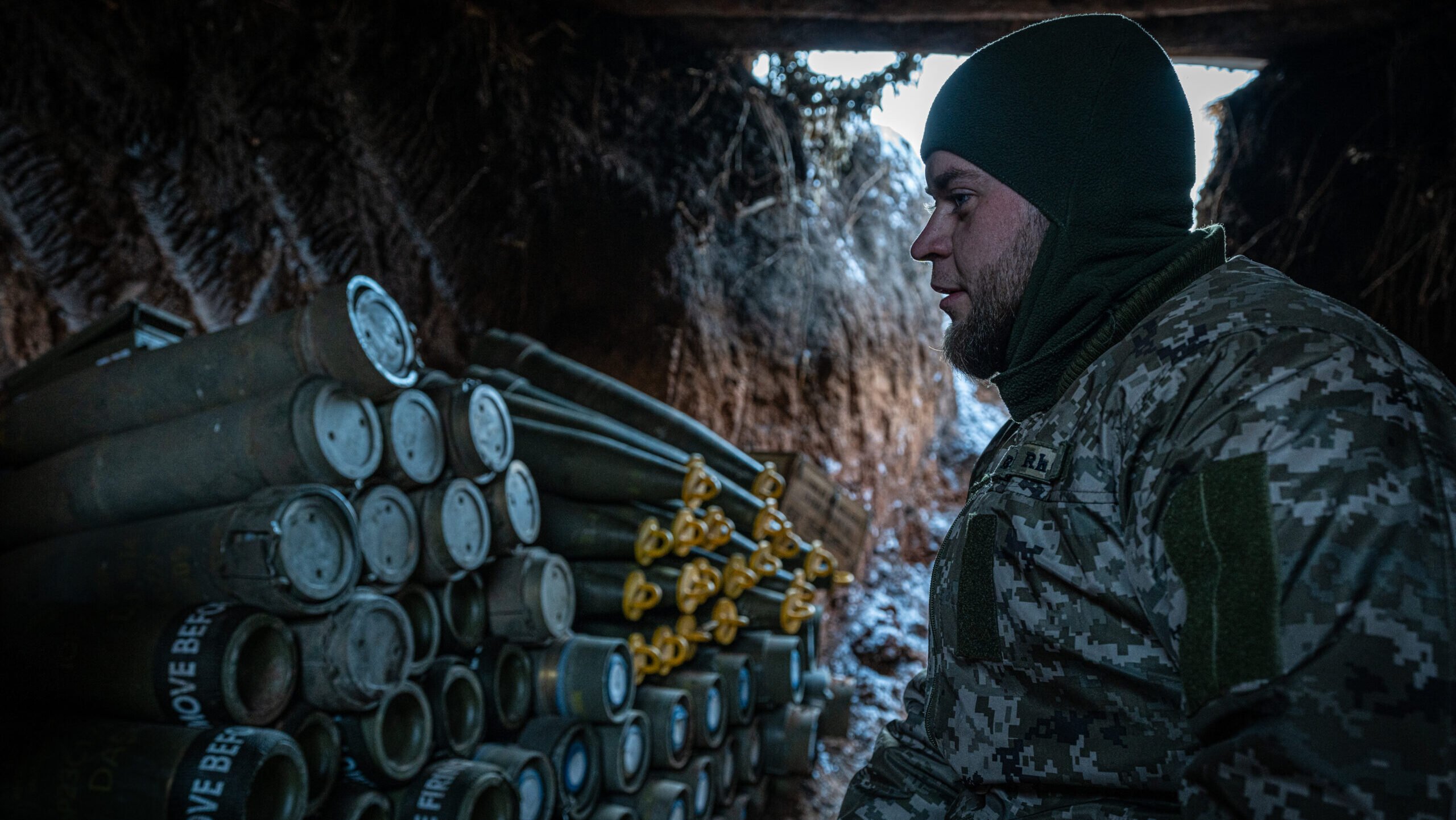
A Ukrainian soldier waits for orders near artillery shells for the M109 artillery self-propelled vehicle on the front line, in the direction of Bakhmut, where clashes between Russia and Ukraine continue to take place, in Donetsk Oblast, Ukraine on January 22, 2024. (Photo by Ignacio Marin/Anadolu via Getty Images)
IAV 2024 — Shorter reconnaissance strike response times, development of a 600-mile front filled with densely packed minefields and anti-tank weapons, and now two years of warfighting lessons, have made the Russian army into a much more “proficient” force, a senior UK defense official warned today.
The official suggested during the IQPC International Armoured Vehicles conference in London that those new changes to Russian army operations have made Ukraine’s long running counteroffensive “hard going.”
The official explained that despite less sophisticated Russian tactics such as stacking mines on top of one another to defeat mine clearance vehicles, its defensive lines are “well constructed, well protected and well concealed.”
The official, speaking on the condition of anonymity in line with conference rules, further noted that the Russian army had demonstrated, through “extensive use” of drone strikes, that Ukrainian engineering and recovery vehicles are considered “high value targets.”
Reconnaissance strikes are thought to have improved too, he explained.
“We think they [Russian army] have a response time that sits between three and six minutes at the moment, and it’s getting better over time,” revealed the UK official.
Russian progress has led to Ukraine resorting to tactics, techniques and procedures (TTPs) more in keeping with the World War II era, leaving the Ukrainian army to rely on tanks to “predominantly” take on fire support cover to protect dismounted infantry.
Ukrainian soldiers are then facing “the difficult job of clearing obstacles, mine by mine, hedgerow by hedgerow,” shared the official.
The assessment comes a matter of months after Ukraine’s commander-in-chief, General Valery Zaluzhny, claimed that his forces had failed to break through Russian minefields, laid between depths of 15 to 20km, reported Britain’s Guardian newspaper.
The publication suggested Russia’s Zemledeliye remote mine laying system has proved difficult to counter because it can be used to roll out fields of mines at a rate faster than Ukrainian sappers can destroy them.
More generally, Ukraine continues to suffer from an ammunition shortage amid industry struggling to keep up with production demands, while Israel’s operations in Gaza in response to the Oct. 7 Hamas attacks threatens to put international partners in the difficult position of reducing Ukrainian military aid funding.
Even so, the UK continues to put its full support behind Ukraine. Earlier this month, it pledged £2.5 billion ($3.2 billion) in additional funding for weapons supplies to Kyiv, covering long range missiles, drones, air defense, artillery ammunition and maritime equipment.
The British army’s “extensive” equipment donation campaign has offered Ukraine more than 300 armored vehicles, including Challenger 2 Main Battle Tanks, air defense platforms and self propelled artillery, in addition to over 300 maneuver and logistic support vehicles, noted the senior UK official.
Addressing lessons learned in Ukraine, the official said the conflict underlined that combined arms remains the “only way to defeat a determined enemy” and acknowledged that a mix of “old and new technologies” have dominated combat operations on both sides.
Artificial intelligence, machine learning, space based intelligence, surveillance and reconnaissance and a “proliferation” of open source data have also heavily influenced the conflict, suggested the official, adding that offensive operations are “significantly harder to conduct” compared to executing defensive actions.
Aloha: Fixes ongoing, then Army’s new watercraft prototype is Hawaii bound for testing
“Everything that we can knock off that list we will do in the archipelago…because that allows us to do the tests in the environment that the vessel will operate in ultimately,” said Maj. Gen. Jered Helwig.





















